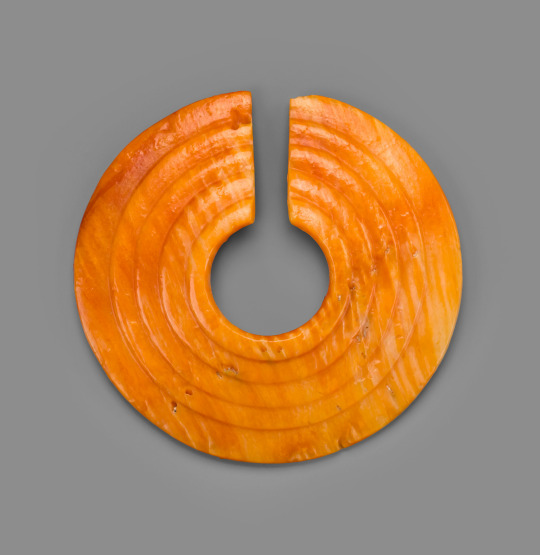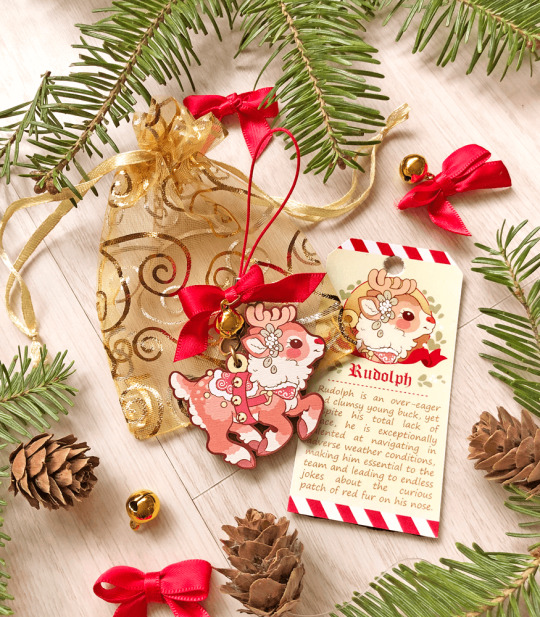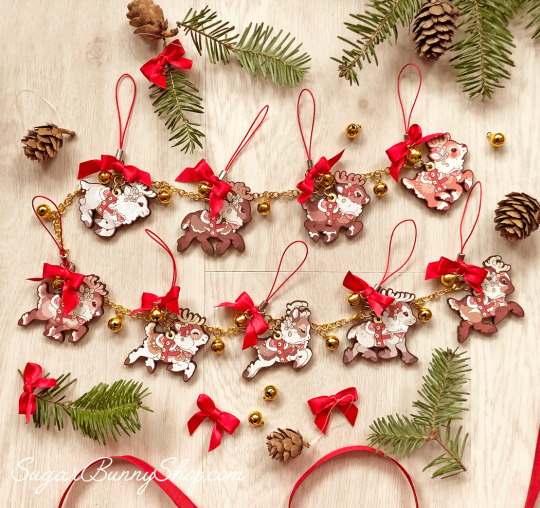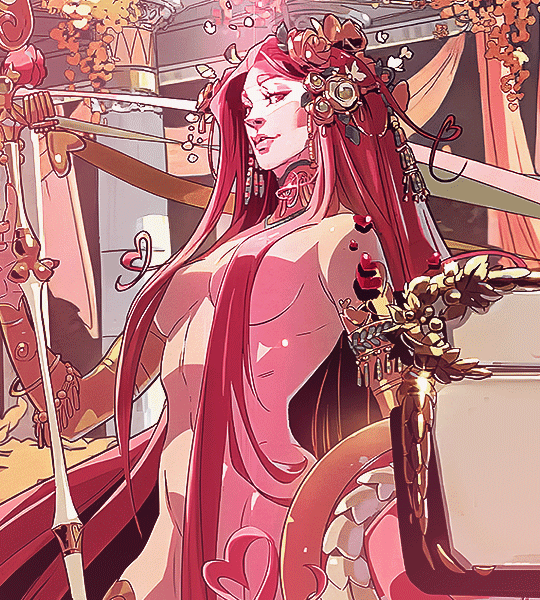#nose Ornament
Explore tagged Tumblr posts
Text

~ Nose Ornament.
Date: A.D. 2nd–6th century
Placeoforigin: Perú
Culture: Vicús
Medium: Gold
#ancient#ancient art#history#museum#archeology#archaeology#nose Ornament#south america#peruvian#peru#pre columbian#gold#vicús#feline#cat#2nd century#6th century
1K notes
·
View notes
Text
#TurtleTuesday :

Nose Ornament in the Form of a Turtle with C-shaped Body Coclé: Venado Beach, Coclé province, Panama, 800-1200 CE Spondylus shell, W. 7.3 cm (2 7/8 in.) The Art Institute of Chicago 1969.795
#animals in art#turtle#Turtle Tuesday#Indigenous art#Central American art#Panamanian art#Coclé art#nose ornament#jewelry#shell#Spondylus shell#carving#Art Institute of Chicago
26 notes
·
View notes
Text

Circular Nose Ornament Incised with Concentric Bands
Coclé, Panama, 800–1200
23 notes
·
View notes
Text



Santa's Reindeer wooden ornaments 🔔🦌🎀
#christmas#christmas 2023#christmas ornaments#christmas decor#holidays#xmas#reindeer#christmas reindeer#ornaments#christmas decorations#santa's reindeer#rudolph#rudolph the red nosed reindeer#shop#merch
1K notes
·
View notes
Text

#merry xmas#merry christmas#christmas tree#christmas#xmas#christmas ornament#christmas cookies#skeletons#bats#black cats#gingerbread#gingerbread man#reindeer#rudolph the red nosed reindeer#gothmas#creepmas#dark#eerie#goth#creepy#spooky#horror#halloween
41 notes
·
View notes
Text









Christmas Recipe Collection! For more Christmas recipes click here.
Top Row
Gingerbread Steamed Pudding
Mini Santa Cheesecakes
Christmas Tree Cupcakes
Middle Row
Christmas Brownies
Gingerbread Pop Tarts
Cherry Bakewell Bars
Bottom Row
Hot Chocolate Cookie Cups
Snowman Doughnuts
Reindeer Stained Glass Cookies
#christmas#christmas food#christmas recipes#food#recipe#recipes#holidays#xmas#merry christmas#christmas tree#festive#december#christmas aesthetic#santa#santa claus#christmas ornament#christmastree#gingerbread#christmas cookies#gingerbread men#rudolph the red nosed reindeer#rudolph#christmas movies#christmas time#christmas 2024#winter wonderland#winter aesthetic#winter vibes#vegan#collections
39 notes
·
View notes
Text
thinking about Aziraphale and Crowley drinking in the bookshop in the evening around Christmastime, after Aziraphale had obtained and decorated a Christmas tree (and maybe he begged Crowley to help him get it with the help of the Bentley as an excuse to spend time together instead of having one delivered),
and Aziraphale popping into the backroom to bring back a tin of biscuits for himself, leaving Crowley alone for a minute, and Crowley gets up to look at the tree while he's alone and waiting for his angel: looks at the lights and the shiny round baubles,
and then comes across a hanging miniature of his beloved Bentley.
And him just being struck by numerous emotions at the sight of something related to him on Aziraphale’s tree… barely noticing Aziraphale's footsteps as he comes back from the backd
#maybe he catches sight of a duck ornament too#and/or an oyster shell#maybe a pair of sunglasses? perhaps too on the nose#but yeah. anyway.#it makes me feel soft to think about#(it makes Crowley feel soft too)#good omens#this could be any time#prob works best after s1#definitely ignoring 2x06#ineffable husbands#ineffable spouses#aziracrow#Crowley#Aziraphale#ineffable christmas#ineffable lovers#ineffable idiots#ineffable partners#good omens christmas#ineffable boyfriends#good omens 1#good omens 2#good omens kiss#happy christmas#merry Christmas good omens fandom#good omens fic#good omens fanfic#good omens fanfiction#ineffable husbands fic
33 notes
·
View notes
Text

New ornament painting for a coworker whose last day was today.
#era art#christmas#island of misfit toys#rudolph the red nosed reindeer#rankin bass#yukon cornelius#bumble#ornament#painting
20 notes
·
View notes
Text

"Behold! Your lead reindeer has arrived" ~Holly
#furry#cute#deer#reindeer#ornaments#oc#furry art#anthro#cartoon#anthro art#art#fantasy#red nosed reindeer
83 notes
·
View notes
Text






steiff gal facebook
#ornament#christmas ornament#rudolph the red nosed reindeer#reindeer#deer#teddy bear#3 wise men#wise men#nativity#camel#santa#nutcracker#guard#soldier#steiff#crown
7 notes
·
View notes
Text
Dragon Age: Inquisition is a Christmas movie.
#gaming#dragon age#bioware#solas#dreadwolf#solavellan#It's got elves#It's got snow#It's got pretty lights#It's got pretty ornaments#It's got DEER#Ru'dolf the red-nosed halla#Blackwall is Santa
17 notes
·
View notes
Text

Made some ornaments for our art gallery tree.
6 notes
·
View notes
Text
More bling from Peru for #SaveASpiderDay: golden spiders for your face!
Spiders can be found in Andean iconography going back at least 2500 years as symbols of warfare, ritual sacrifice, and agricultural fertility. Here are three examples found on facial jewelry, from The Met's collection:

1. Nose ornament, 100 BCE - 200 CE, Peru, North Coast, Salinar culture; gold, H. 2 x W. 4 3/8 x D. 1/8 in. (5.1 x 11.1 x 0.3 cm)

2. Nose ornament, 6th–7th century CE, Peru, Moche; gold, silver, shell, H. 2 5/8 x W. 3 3/8 x D. 1/4 in. (6.7 x 8.6 x 0.6 cm)

3. Earflare frontal, Spider, 6th–7th century CE, Peru, Moche; gold, silver, H. 3 1/2 × W. 3 1/2 × D. 3/4 in. (8.9 × 8.9 × 1.9 cm)
#PleaseNoSquish 🕷️
#spider#arachnids#invertebrates#jewelry#jewellry#facial jewelry#nose ornament#ear flare#Peruvian art#South American art#Indigenous art#ancient art#pre-conquest art#Salinar#Moche#metalwork#decorative arts#iconography#Metropolitan Museum of Art New York#Save a Spider Day#Please No Squish#animals in art
50 notes
·
View notes
Text

2 notes
·
View notes
Text
Jamacoaque Copper Nose Ornaments
These items are unique and seldom exhibited. They are made of solid copper and are very heavy. They have an excellent green patina on all three. The largest shows evidence of original gold plating. Manabi region, Ecuador. 500 BC – 500AD. Condition is Choice. The sizes are 25mm wide, 22mm tall, 20mm thick, 68.8g; 22mm wide, 21mm tall, 15mm thick, 33.5g; and 18mm wide, 15mm tall, 8mm thick, 10g.
The Jamacoaque civilization mastered the art of metallurgy and had a thorough knowledge of alloy production, notably a well-developed alloy of copper and arsenic. They were also well-versed in the process of gold plating. The method employed for casting metal was placing it in a ceramic crucible and heating it using wood charcoal as fuel. Air was blown into the kiln with a bamboo tube until the temperature reached 1100ºC, sufficient to melt gold or copper.
#ancient art#ancient history#archaeology#pre-columbian#art history#inca#artifacts#south america#ancient copper#nose ornaments#nose piercing
2 notes
·
View notes
Text
Pretty pink lady


APHRODITE, Goddess of Love Hades (2020) vs. Hades 2 (TBA)
#hades game#i will admit i do prefer her facial features in 1 (esp her nose)#but her new hair ornamentations are just gORGEOUS#jewelry
17K notes
·
View notes